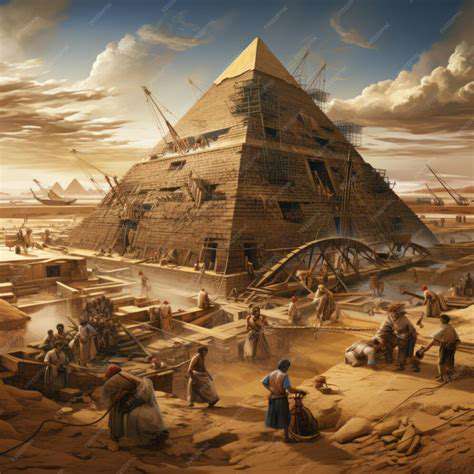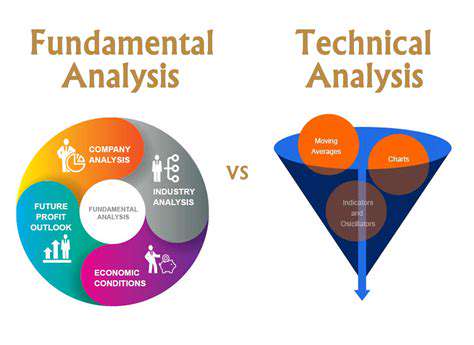Egyptian Pyramids: Exploring Ancient Wonders, History & Travel Tips

Early Stages of Construction
The pyramid-building process began with extraordinary attention to detail. Survey teams would spend months establishing perfect alignments with celestial bodies, demonstrating the Egyptians' sophisticated understanding of astronomy. Their precision in orientation remains impressive even by modern standards, with some pyramids aligned to true north with minimal deviation.
Site preparation involved more than just clearing land. Engineers developed complex leveling techniques using water-filled trenches as natural spirit levels. This innovative approach allowed them to create perfectly flat foundations across vast areas - a necessity for structures meant to last eternity.
Materials Procurement and Transportation
The logistics of material transport present one of the most fascinating aspects of pyramid construction. Quarry workers used copper tools and stone hammers to extract massive limestone blocks, while specialized teams developed ingenious methods for moving these multi-ton stones. The discovery of ancient ramp systems and sled tracks provides tangible evidence of their problem-solving abilities.
Recent archaeological findings suggest that waterways may have played a greater role in material transport than previously thought. During the Nile's annual flooding, engineers might have used the raised water levels to float stones closer to construction sites, significantly reducing the labor required for overland transport.
Block Placement and Shaping
The precision of stone fitting in the pyramids continues to baffle modern engineers. Workers achieved near-perfect joints without modern measuring tools, using techniques passed down through generations of stonemasons. Their ability to maintain consistent angles across thousands of blocks speaks to rigorous training programs and strict quality control measures.
Evidence suggests that masons developed specialized tools for different stages of stone working. From rough shaping at quarries to fine finishing on site, each step had its own set of implements and techniques, reflecting a highly specialized workforce.
Labor and Workforce Management
Contrary to popular myths, pyramid workers weren't slaves but skilled laborers who took pride in their work. Archaeological evidence from worker villages shows they received quality housing, medical care, and even beer rations. This sophisticated labor system demonstrates an early understanding of worker motivation and productivity.
The organization of such large workforces required advanced administrative systems. Scribes maintained detailed records of work assignments, material deliveries, and even worker absences - creating what might be considered ancient timesheets.
Pyramid Mysteries: Unveiling the Secrets of the Afterlife

Unveiling the Secrets of the Ancient Pyramids
These monumental structures continue to reveal new secrets as research methods advance. Recent scans using muon tomography have detected previously unknown voids within the Great Pyramid, suggesting there may still be undiscovered chambers. Each new finding reminds us how much we still have to learn about these ancient wonders.
The pyramids' alignment with celestial bodies wasn't random but reflected deep astronomical knowledge. Certain shafts within the Great Pyramid align with specific stars that held religious significance, showing how architecture, astronomy, and theology intertwined in Egyptian thought.
The Role of Pharaohs in Pyramid Construction
Pharaohs viewed pyramid construction as a sacred duty, not just personal glorification. These projects provided employment, stimulated the economy, and reinforced national unity. The pyramids thus served both spiritual and practical purposes in Egyptian society.
Recent studies of worker graffiti reveal surprising details about construction crews. Teams often named themselves after the pharaoh (e.g., Friends of Khufu), showing personal connection to their ruler despite the hierarchical society.
Materials and Techniques of Pyramid Construction
The variety of stones used tells its own story. While limestone formed the bulk, granite from Aswan (over 500 miles away) was reserved for special chambers. The effort expended transporting these heavier stones demonstrates their symbolic importance.
Analysis of mortar samples has revealed unexpected ingredients, including organic materials that may have had ritual significance. Even construction materials carried religious meaning in this highly symbolic culture.
Pyramid Design and Symbolism
The pyramid shape itself represented the benben stone - the primordial mound from which creation emerged in Egyptian mythology. This connection between architecture and creation stories shows how deeply religion permeated all aspects of Egyptian life.
Recent interpretations suggest the pyramids' interior layouts may mirror the pharaoh's journey through the afterlife, with each chamber representing a different stage of this spiritual transformation.
The Impact of Pyramid on Modern Society
Beyond tourism, the pyramids continue to influence modern architecture and engineering. Their durability inspires contemporary building techniques, while their precise orientation informs studies in archaeoastronomy. These ancient structures remain relevant in surprising ways to our modern world.
Read more about Egyptian Pyramids: Exploring Ancient Wonders, History & Travel Tips
Hot Recommendations
-
*Valladolid vs. Celta de Vigo: La Liga Clash – Tactical Preview & Predictions
-
*AJ Ferrari: Emerging Talent Profile & Career Highlights in [Your Sport]
-
*UCSD Women’s Basketball: Season Recap, Standout Performers & Future Outlook
-
*Real Madrid C.F. Femenino vs. Arsenal: Women’s Soccer Showdown Analysis
-
*Chet Holmgren: NBA Prospect Profile – Stats, Highlights & Future Projections
-
*RJ Davis: Rising Talent Profile, Career Highlights & Future Projections
-
*Kyle Busch: NASCAR Star’s Career Highlights, Race Wins & Future Prospects
-
*River Plate vs. Club Ciudad de Bolívar: Argentine Soccer Showdown Analysis
-
*Costco Membership: Benefits, Savings Tips & Latest Updates
-
*Pokémon Go: Latest Updates, Tips & Community Events











